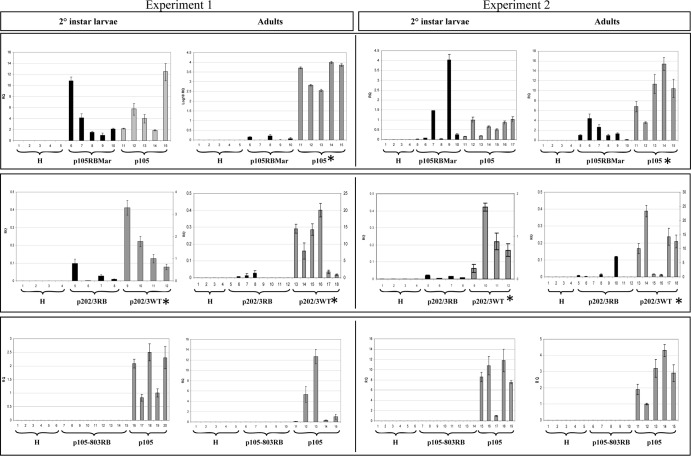FIG 6.
NSs-defective isolates can be acquired and accumulate in second-instar larvae, but virus titer is lower in adult thrips. We compared virus relative abundances in cohorts of 8 to 10 individual larvae or adults of p105 and p105RBMar, p202/3WT and p202/3RB, and p105 and p105-803RB. H corresponds to thrips feeding on healthy leaves. For each comparison, we show the results of two independent experiments. Relative quantification of TSWV isolates in second-instar larvae and adults of Frankliniella occidentalis was performed by real-time TaqMan qPCR, using the thrips actin gene for normalization and ΔΔCT calculation using Step One software v. 2.0 (Applied Biosystems). RQ, relative quantity. A random sample was used as a reference (RQ = 1) in each experiment. Significant differences between the relative quantities of the two isolates were determined by ANOVA (P ≤ 0.05) using SigmaStat analysis software v. 3.5. An asterisk indicates that differences are statistically significant. In case of p202/3RB and WT experiments, the RQ scales are different for each of the two isolates: the left scale refers to p202/3RB, whereas the right scale refers to p202/3WT.

